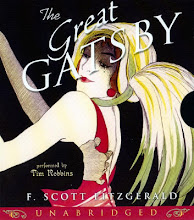


 concerned excessively or exclusively with oneself: seeking or concentrating on one's own advantage, pleasure, or well-being without regard for others
concerned excessively or exclusively with oneself: seeking or concentrating on one's own advantage, pleasure, or well-being without regard for othersarising from concern with one's own welfare or advantage in disregard of other
Most of the characters in The Great Gatsby are overcome with greediness and selfishness. Jay Gatsby is one of the main examples. After rekindling the lost love of an old flame, Daisy, he still continued to want more. Even though she was married to Tom Buchanan, she was impressed by Gatsby's wealth and riches and spent more time with him at his luxurious mansion, but Gatsby expected more. He wanted her to tell Tom that she has never loved him and leave to live with Gatsby. He pressured Daisy, unaware of her love for Tom and the difficulties she faced.
 Tom, Daisy, and Myrtle were also victims of one of the seven deadly sins. Tom cheated on Daisy with Myrtle, while Daisy cheated on Tom with Gatsby, and while Myrtle cheated on George. They all cheated on their lovers, wanting more. They weren't satisfied or content with what they had and let their greediness overpower them.
Tom, Daisy, and Myrtle were also victims of one of the seven deadly sins. Tom cheated on Daisy with Myrtle, while Daisy cheated on Tom with Gatsby, and while Myrtle cheated on George. They all cheated on their lovers, wanting more. They weren't satisfied or content with what they had and let their greediness overpower them.Sources: The Great Gatsby
Sparknotes.com












 Even though bank robberies and bootlegging were happening everywhere, most gangsters were found in the same area. After commiting a crime, they would usually flee to a neighboring state as their hideout. If criminals weren't hiding out, they were spending their time in jail.
Even though bank robberies and bootlegging were happening everywhere, most gangsters were found in the same area. After commiting a crime, they would usually flee to a neighboring state as their hideout. If criminals weren't hiding out, they were spending their time in jail.


















 In 1921, Zelda became pregnant and they went back to St. Paul. Later on, their daughter, Frances Scott Fitzgerald was born.
In 1921, Zelda became pregnant and they went back to St. Paul. Later on, their daughter, Frances Scott Fitzgerald was born. In 1924, Fitzgerald moved to France to work on another novel, The Great Gatsby. The next year, when it was published, the sales were disappointing but movie deals brought in more money.
In 1924, Fitzgerald moved to France to work on another novel, The Great Gatsby. The next year, when it was published, the sales were disappointing but movie deals brought in more money. In 1927, he moved back to the United States and noticed that Zelda had been behaving strangely. A few years later, she had a mental breakdown and entered a clinic for treatment. Fitzgerald had to postpone writing his novel to write short stories to pay for her bills.
In 1927, he moved back to the United States and noticed that Zelda had been behaving strangely. A few years later, she had a mental breakdown and entered a clinic for treatment. Fitzgerald had to postpone writing his novel to write short stories to pay for her bills.












